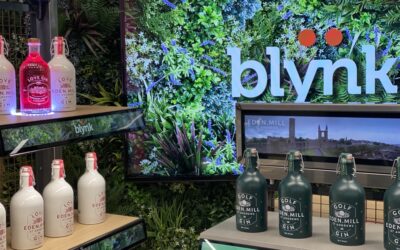Audio choices in everyday life.
It may sound obvious, but we all make conscious choices about what we want to listen to on a daily, or even hourly basis.
Consider your listening habits on an average day: maybe you listen to an interesting podcast on your commute to work; your office plays the radio; your gym playlist keeps you motivated as you work out, and a relaxation playlist accompanies a bath at the end of a long day. With each of these backing tracks comes a differing physical space; the car, work, the gym, your bathroom. And as well as this, the different music also cues a distinct set of behaviours, thinking patterns, expectations and emotions.
We have come to rely on audio to not only accompany, but to identify and inform both our physical and mental environments.
What role does music play in shaping a brand space?
Music in brand settings works in exactly the same way.
There is a disparity between the attention brands and retailers pay to how they look, as to how they sound. The branded experience begins at the door of the retail or event space. The layout, colour-scheme, lighting, and styling are important branding identifiers, but how the space sounds can have as big an impact as any of these visual factors.
In the physical space, audio can demarcate or ‘zone’ areas, setting them apart from their surroundings. It can mask background noise such as traffic, air conditioning or talking, and it can also create a cohesion between a brand’s identity and their physical store layout.
Music also affects behaviours, expectations and emotions in retail and event settings, and this is where a brand’s audio strategy is most important.
Music in this context can also be used to appeal to a target demographic, by specifically playing music that will resonate with their target audience, and communicate brand values. By playing certain genres or artists, they can piggyback on music’s cultural capital and can use it to say something about their own brand identity. When done effectively, audio used in this way can provoke feelings of inclusiveness and alignment with target demographic and create brand loyalty.
Additionally, audio serves the purpose of creating an atmosphere which can alter thinking patterns and behaviours. This can be seen through the subconscious matching of behaviours to audio cues such as tempo and volume (the faster, and louder your gym playlist, the faster you run).
When planning audio for a retail or event space, it’s also important to remember that it affects expectations and emotions. Audio must be appropriate for the context, so emotional response and expected behaviours must be considered in relation to audio planning. For example, a gym clothing store must consider if playing the same playlist that you listen to while in the gym will clearly communicate their brand identity, or if it will create an unappealing atmosphere where the loud, driving beats work against the expected behaviour (shopping), creating negative emotions in customers.
With our roots firmly based in audio, how a space sounds is woven into Blynk’s DNA. We take audio considerations into our digital strategy as an important factor in experiential OOH and can offer our professional expertise on how to best integrate effective audio into a brand space.




